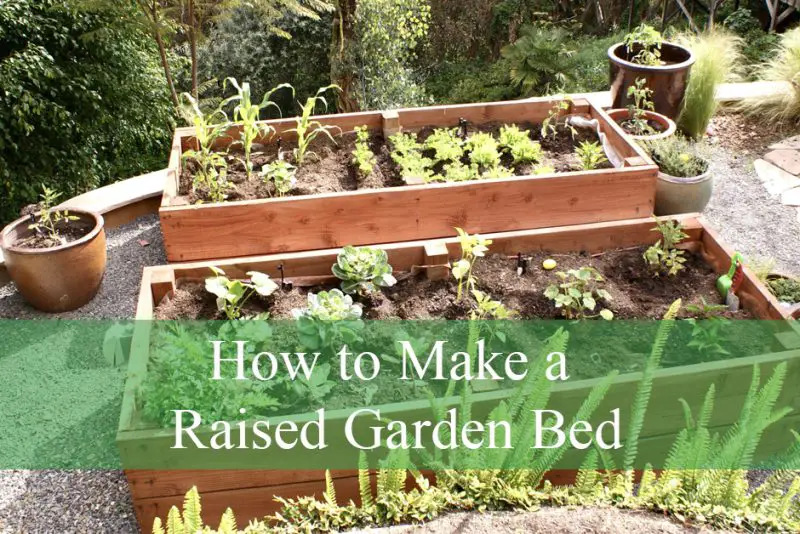Raised garden beds have become a popular choice for home gardeners who want to maximize their growing space, improve soil quality, and make gardening easier. Whether you have a small backyard, a patio, or a large piece of land, building a raised garden bed can transform the way you grow vegetables, herbs, or flowers. The best part is that you do not need to spend a fortune or weeks of hard work to get started. With the right approach, you can create a durable, productive, and attractive raised bed in just a short amount of time.
This guide will walk you through every step of the process, from choosing the right location and materials to assembling the bed and preparing the soil. By the end, you will have all the knowledge you need to build a thriving raised garden bed quickly and affordably.
Understanding the Benefits of a Raised Garden Bed

A raised garden bed is essentially a framed area filled with soil, elevated above the ground. One of the main advantages is the improved soil quality you can achieve. Because you are not relying on native soil, you have complete control over the type and richness of the soil mix. This means healthier plants, better drainage, and fewer weeds.
Another benefit is the ease of maintenance. Raised beds are higher off the ground, making it easier to weed, water, and harvest crops without excessive bending or kneeling. This is particularly helpful for older gardeners or anyone with physical limitations. Additionally, raised beds warm up faster in the spring, allowing you to start planting earlier in the season.
Affordability is also a key factor. Contrary to what some may think, building a raised garden bed does not have to be expensive. With the right choice of materials and a simple construction method, you can set up a functional garden bed for a fraction of the cost of pre-made kits.
Choosing the Best Location for Your Raised Garden Bed
Selecting the right location is crucial for the success of your raised garden bed. Plants need plenty of sunlight, so aim for a spot that receives at least six to eight hours of direct sunlight each day. Observe your yard throughout the day to find an area that stays bright for the longest period.
Consider proximity to a water source as well. You will need to water your garden regularly, so placing it near an outdoor faucet or rainwater collection barrel will make the task much easier. Avoid low-lying areas where water tends to collect, as poor drainage can lead to root rot and other plant diseases.
Finally, choose a level area if possible. A flat surface makes construction easier and ensures even distribution of water and nutrients in the soil. If your only available space is on a slope, you can still build a raised bed, but you may need to do additional leveling or build terraced sections.
Selecting Affordable Materials for Construction
When building a raised garden bed quickly and affordably, the materials you choose are critical. The most common and cost-effective option is wood, particularly untreated pine, cedar, or fir. Untreated pine is the cheapest but may only last a few years, whereas cedar is naturally rot-resistant and can last up to a decade. Avoid pressure-treated wood that may contain chemicals harmful to edible plants.
If wood is not available or too costly, consider repurposing materials such as old wooden pallets, reclaimed boards, or even sturdy concrete blocks. Concrete blocks are durable and easy to stack, although they may require more soil to fill. Some gardeners also use corrugated metal sheets secured with wooden frames for a modern look.
The height of the bed can vary depending on the plants you want to grow and the depth of soil needed. For most vegetables, a height of 10 to 12 inches is sufficient. If you want deeper soil for root vegetables like carrots or potatoes, consider building a bed that is 18 inches or higher.
Preparing the Ground Before Construction
Before you assemble your raised garden bed, it is essential to prepare the ground. Clear away any grass, weeds, or debris in the chosen area. You can do this by manually pulling them out or smothering them with cardboard or thick layers of newspaper. Using cardboard is not only easy but also environmentally friendly, as it eventually decomposes and enriches the soil.
If you are building your raised bed directly over grass, flatten the area as much as possible to ensure stability. Some gardeners like to add a layer of gravel or coarse sand at the bottom to improve drainage, especially if the soil beneath is heavy clay. However, this step is optional and depends on your local soil conditions.
Make sure the area is level before proceeding. A level surface prevents water from pooling on one side of the bed and ensures uniform plant growth.
Assembling the Raised Garden Bed
Once your ground is prepared, assembling the raised garden bed is straightforward. Cut your wooden boards or gather your chosen materials to the desired dimensions. Most beginners start with a bed that is four feet wide and six to eight feet long, as this size is easy to reach from both sides without stepping into the soil.
Position the boards on the ground to form a rectangle, ensuring the corners are square. Secure the corners with screws or nails for stability. If you are using concrete blocks or stone, stack them neatly and ensure they are level. The structure does not need to be overly complicated; even a simple rectangular frame will work perfectly for most garden crops.
Once assembled, check the stability of the frame by gently pushing on the sides. If the frame shifts easily, reinforce it with corner stakes or additional screws. A sturdy frame will hold the soil in place and prevent bowing when filled.
Filling the Raised Garden Bed with Quality Soil
The soil mix you use is one of the most important factors in the success of your raised garden bed. A good mix should be light, rich in nutrients, and well-draining. Many gardeners use a combination of topsoil, compost, and coarse sand or perlite. Compost is particularly important as it provides essential nutrients for plant growth.
If you are on a budget, you can create your own soil mix using native soil combined with homemade compost or aged manure. Just ensure the soil is not too heavy or compacted, as this will restrict root growth. If your local soil is clay-heavy, add more organic matter to improve aeration.
Fill the bed gradually, gently tamping down the soil to remove air pockets. Water the soil thoroughly after filling to help it settle. Over time, the soil level may sink slightly, so you may need to add more compost or soil each season.
Planting in Your Raised Garden Bed
Once your raised garden bed is filled, you can begin planting. Start by choosing plants suitable for your climate and growing season. Many vegetables such as tomatoes, lettuce, peppers, and carrots thrive in raised beds because of the loose, nutrient-rich soil. Herbs like basil, rosemary, and thyme also do exceptionally well.
Arrange plants based on their sunlight and spacing requirements. Taller plants should be placed on the north or back side of the bed to prevent shading smaller plants. Because the soil in raised beds drains well, you may need to water more frequently, especially during hot weather. Mulching with straw, shredded leaves, or wood chips can help retain moisture and suppress weeds.
Rotate your crops each season to keep the soil healthy and prevent nutrient depletion. Adding fresh compost or organic fertilizer between planting cycles will maintain soil fertility.
Maintaining Your Raised Garden Bed
A raised garden bed requires regular maintenance, but it is generally easier to care for than traditional in-ground gardens. Keep an eye on soil moisture and water consistently, as the well-drained soil can dry out faster. Check for weeds regularly and remove them by hand before they become established.
Fertilizing once or twice a season with compost or organic fertilizer will keep your plants thriving. Because the soil in raised beds is contained, nutrients can deplete more quickly, so regular replenishment is important.
Over time, wooden frames may begin to show signs of wear. Inspect the structure each season and replace any damaged boards to ensure the bed remains sturdy. With proper care, your raised garden bed can last for many years and provide abundant harvests.
FAQs about How to Make a Raised Garden Bed Fast and Affordable
What is the Cheapest Way to Make a Raised Garden Bed?
The cheapest way to make a raised garden bed is by using untreated pine boards, reclaimed wood, or repurposed materials such as old pallets. Concrete blocks are also an affordable option, especially if you already have some at home. Keeping the design simple and using locally sourced soil and compost will reduce costs further.
How Deep Should a Raised Garden Bed Be for Vegetables?
Most vegetables grow well in a raised bed that is 10 to 12 inches deep. However, root vegetables like carrots and potatoes require deeper soil, ideally 18 inches or more. Deeper beds allow roots to grow freely and provide better moisture retention and nutrient availability.
Can I Put a Raised Garden Bed Directly on Grass?
Yes, you can place a raised garden bed directly on grass. It is recommended to cover the grass with cardboard or newspaper before adding soil. This layer will smother the grass, prevent weeds, and gradually decompose, enriching the soil over time.
What Soil is Best for a Raised Garden Bed?
A mix of topsoil, compost, and coarse sand or perlite works best for raised garden beds. This combination ensures good drainage, rich nutrients, and proper aeration. Adding organic matter like aged manure or kitchen compost further boosts soil fertility and promotes healthy plant growth.
How Long Will a Wooden Raised Garden Bed Last?
The lifespan of a wooden raised garden bed depends on the type of wood used. Untreated pine typically lasts three to five years, while rot-resistant woods like cedar or redwood can last eight to ten years or more. Regular maintenance and adding protective linings can extend its durability.
Final Thoughts on Building a Fast and Affordable Raised Garden Bed
Building a raised garden bed does not need to be complicated or expensive. By selecting the right location, using affordable materials, and preparing a nutrient-rich soil mix, you can set up a productive garden space in just a short time. The investment of effort and resources is minimal compared to the benefits of fresh, homegrown vegetables and herbs.
With regular maintenance, your raised garden bed will continue to improve year after year. The soil will become richer, your plants healthier, and your gardening experience more enjoyable. Whether you are a beginner or an experienced gardener, this method is one of the most efficient and rewarding ways to grow your own food.






